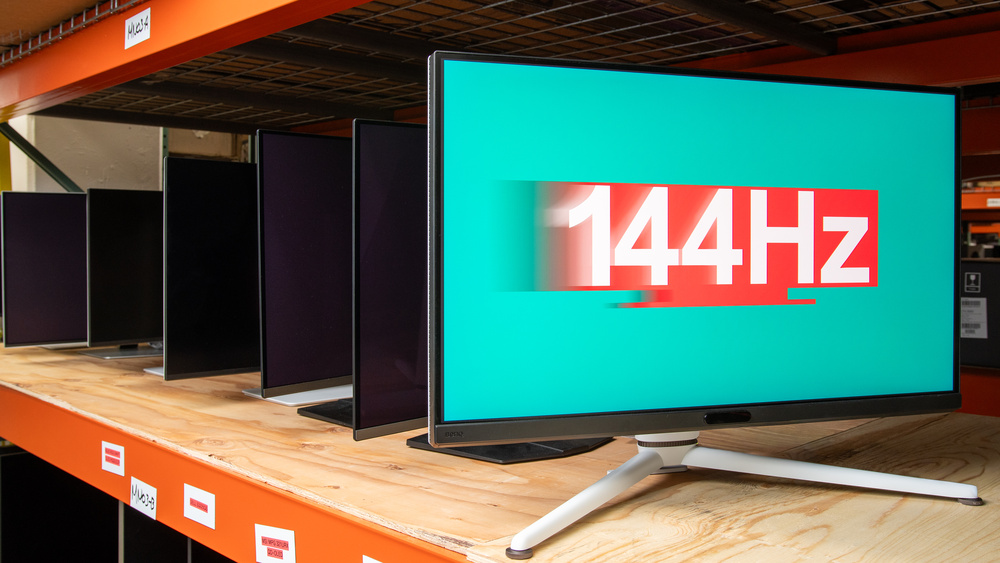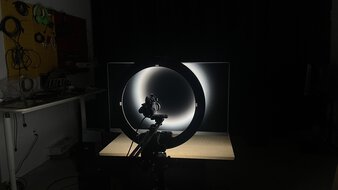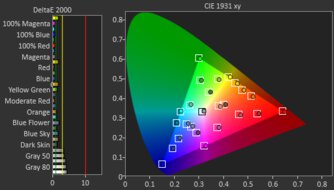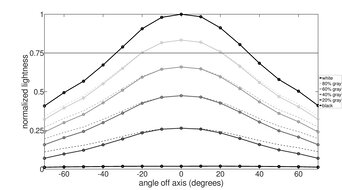There are benefits to gaming at 144Hz, and even if gaming monitors are coming out with higher refresh rates, you need a powerful PC gaming setup to take full advantage of them. The market for monitors with a native refresh rate of exactly 144Hz is becoming limited, and there are many models coming out with refresh rates slightly higher than 144Hz, like 180Hz. The recommended monitors below reflect that and have refresh rates as high as 180Hz, and you can easily use them at 144Hz instead.
There are a few factors to consider when looking for a gaming monitor. A fast response time is important for sharp motion so that there isn't much blur behind fast-moving objects. Getting a monitor with low input lag also makes gaming feel responsive, but most monitors have low input lag anyway. If you care about detailed images, you should also consider a monitor's resolution, like 1440p or 4k, though most entry-level and budget-friendly 144Hz monitors have a 1440p resolution.
We've bought and tested over 375 monitors, and below are our picks for the best monitors with native refresh rates from 144Hz to 180Hz. See our recommendations for the best 1440p 144Hz monitors, the best 4k 144Hz monitors, and, if you want a higher refresh rate, the best 240Hz monitors.
Quick Look
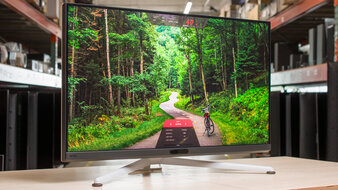




We buy and test more than 30 monitors each year, with units that we buy completely on our own, without any cherry-picked units or samples. We put a lot into each unbiased, straight-to-the-point review, and there's a whole process from purchasing to publishing, involving multiple teams and people. We do more than just use the monitor for a week; we use specialized and custom tools to measure various aspects with objective data-based results. We also consider multiple factors before making any recommendations, including the monitor's cost, its performance against the competition, and whether or not it's easy to find.
-
Best 144Hz Monitor
 PC Gaming7.9Response Time8.3HDR Picture7.6SDR Picture7.4Brightness9.3Size32"Pixel TypeIPSNative Refresh Rate144 HzMax Refresh Rate144 HzSee all our test resultsNative Resolution3840 x 2160
PC Gaming7.9Response Time8.3HDR Picture7.6SDR Picture7.4Brightness9.3Size32"Pixel TypeIPSNative Refresh Rate144 HzMax Refresh Rate144 HzSee all our test resultsNative Resolution3840 x 2160The best 144Hz monitor that we've tested is the BenQ MOBIUZ EX321UX. It's a good choice for gaming, as fast-moving objects look quite crisp, and it has low input lag for a responsive feel. It also provides a very immersive gaming experience, as it has a large 32-inch screen and detailed 4k resolution. Additionally, it looks great, thanks to its local dimming system, which displays fairly deep blacks alongside bright highlights, and it features very vivid colors. It also doesn't have too much haloing around bright objects, but there's still some.
Additionally, it's versatile for gaming in a wide variety of environments. It gets bright enough to fight glare in a bright space, and it retains low black levels in both bright and dark rooms. It also has some useful features, like DisplayPort and HDMI 2.1 bandwidth, which let the monitor take full advantage of modern graphics cards that also support these higher bandwidth formats.
-
Best Mid-Range 144Hz Monitor
 PC Gaming7.7Response Time7.5HDR Picture6.8SDR Picture7.1Brightness8.7Size27"Pixel TypeIPSNative Refresh Rate160 HzMax Refresh Rate320 HzSee all our test resultsNative Resolution3840 x 2160
PC Gaming7.7Response Time7.5HDR Picture6.8SDR Picture7.1Brightness8.7Size27"Pixel TypeIPSNative Refresh Rate160 HzMax Refresh Rate320 HzSee all our test resultsNative Resolution3840 x 2160If you want something cheaper than the BenQ MOBIUZ EX321UX, the Acer Nitro XV275K P5biipruzx is a great mid-range option that's worth getting when it's on sale. It's similar in many ways to the BenQ, as it also has a sharp 4k screen and gets bright enough for highlights to pop. This allows it to overcome glare in most environments, although it's not as bright as the BenQ.
It also features a local dimming system, although it doesn't work as well as the BenQ. It causes haloing around bright objects, and while it helps improve picture quality in dark scenes with HDR, it cannot be used in SDR at all. This means the SDR picture quality is worse because blacks look gray. On the plus side, it works well for fast-paced gaming, as it has good motion handling; however, fast-moving objects don't look quite as crisp as those on the BenQ. Unlike the BenQ, it doesn't support DisplayPort 2.1 bandwidth, but it at least has HDMI 2.1 bandwidth.
-
Best Budget 144Hz Monitor
 PC Gaming8.2Response Time8.5HDR Picture8.0SDR Picture8.2Brightness8.3Size27"Pixel TypeVANative Refresh Rate165 HzMax Refresh Rate180 HzSee all our test resultsNative Resolution2560 x 1440
PC Gaming8.2Response Time8.5HDR Picture8.0SDR Picture8.2Brightness8.3Size27"Pixel TypeVANative Refresh Rate165 HzMax Refresh Rate180 HzSee all our test resultsNative Resolution2560 x 1440If you're looking for the best budget 144Hz monitor, the AOC Q27G3XMN is a great lower-cost alternative to the Acer Nitro XV275K P5biipruzx. The main difference with the Acer is that it has a lower 1440p resolution; this means it doesn't display the same detailed images. While it has an even faster overall response time than the Acer, there's smearing with fast-moving objects. It also lacks HDMI 2.1 bandwidth, but you can still get a 144Hz signal over HDMI regardless.
Like the Acer, it utilizes Mini LED backlighting, which makes highlights pop in HDR, and displays deeper blacks with minimal haloing, contributing to its excellent picture quality. It also gets bright enough to overcome glare in most environments. You can use its local dimming as you wish in SDR and HDR, so it has better picture quality than the Acer in SDR. If you're looking for a monitor that has a better local dimming feature and gets even brighter, check out the similar AOC Q27G40XMN, which is available only at Best Buy in the US. However, it has worse motion handling.
-
Best Cheap 144Hz Monitor
 PC Gaming6.9Response Time7.4HDR Picture4.9SDR Picture5.8Brightness7.1Size27"Pixel TypeIPSNative Refresh Rate165 HzMax Refresh Rate170 HzSee all our test resultsNative Resolution2560 x 1440
PC Gaming6.9Response Time7.4HDR Picture4.9SDR Picture5.8Brightness7.1Size27"Pixel TypeIPSNative Refresh Rate165 HzMax Refresh Rate170 HzSee all our test resultsNative Resolution2560 x 1440If you find the AOC Q27G3XMN too expensive, and you're looking for something cheap and more basic, check out the MSI G274QPF-QD. It has the same 1440p resolution as the AOC, with similar brightness in SDR, so it fights glare in most environments. Additionally, while it has a bit more blur with fast-moving objects than the AOC, it also doesn't have any black smearing that the AOC has.
However, the biggest difference between the two monitors is HDR performance. The MSI doesn't have a local dimming system, so deep blacks appear gray, and it doesn't get bright enough for highlights to pop. Additionally, it has less vivid colors in HDR, so it doesn't deliver an impactful HDR gaming experience. It's still fine for SDR gaming, though, as it has accurate colors, and its wide viewing angle helps keep the image consistent from the sides, like if you want to share your screen for co-op gaming.
Notable Mentions
-
Dell Alienware AW3425DWM:
The Dell Alienware AW3425DWM is a budget ultrawide monitor that offers more screen space than the AOC Q27G3XMN. This is useful for playing atmospheric games as you get a more immersive feel, but it has worse picture quality and motion handling than the AOC.
See our review -
Dell Alienware AW3225DM:
The Dell Alienware AW3225DM is a larger alternative to the AOC Q27G3XMN. It has the same 1440p resolution, and like the AOC, it has great contrast with local dimming off. However, it has far worse HDR performance, and fast-moving objects look a bit blurrier.
See our review -
ASUS ROG Strix XG27ACS:
The ASUS ROG Strix XG27ACS is an entry-level 27-inch, 1440p gaming monitor that competes with the MSI G274QPF-QD. It performs similarly for the most part, and even has better motion handling, but it can be harder to find.
See our review
Recent Updates
Dec 08, 2025:
We replaced the Sony INZONE M9 II with the Acer Nitro XV275K P5biipruzx; we renamed it as the 'Best Mid-Range 144Hz Monitor' because the Acer is cheaper, and for consistency with other recommendations. We also removed the Acer Nitro XV275K P3biipruzx from Notable Mentions.
Aug 14, 2025:
We replaced the Dell Alienware AW3423DWF with the BenQ MOBIUZ EX321UX, as the BenQ gets much brighter and has a sharper screen. We also replaced the Acer Nitro XV275K P3biipruzx with the Sony INZONE M9 II, as the Acer is hard to find right now. Additionally, we added the MSI G274QPF-QD as 'Best Cheap'. Finally, we added the Dell Alienware AW3225DM and the Acer Nitro XV275K P3biipruzx to the Notable Mentions.
Jul 07, 2025:
We removed the AOC 24G15N and replaced the Dell S3422DWG with the Dell Alienware AW3425DWM in the Notable Mentions.
Mar 28, 2025:
We removed the LG 27GP850-B/27GP83B-B because its price went up, and it's hard to find. We also changed the Notable Mentions to reflect changes in the article and the current monitor market by removing the Dell Alienware AW3423DW and adding the Dell S3422DWG and the AOC 24G15N.
Feb 19, 2025:
We replaced the Dell G2724D with the LG 27GP850-B/27GP83B-B, as the Dell is hard to find. We also introduced a new format to the article and updated the text to reflect these changes.
All Reviews
Our recommendations are based on what we think are the best 144Hz monitors, including those with slightly higher refresh rates, and are currently available. They're adapted to be valid for most people in each price range. The rating is based on our review, factoring in price and feedback from our visitors.
If you would prefer to make your own decision, here's the list of all of our monitors with a minimum native refresh rate of 144Hz and a maximum of 180Hz. Be careful not to get too caught up in the details. Most monitors are good enough to please most people, and the things we fault monitors on are often not noticeable unless you really look for them.
